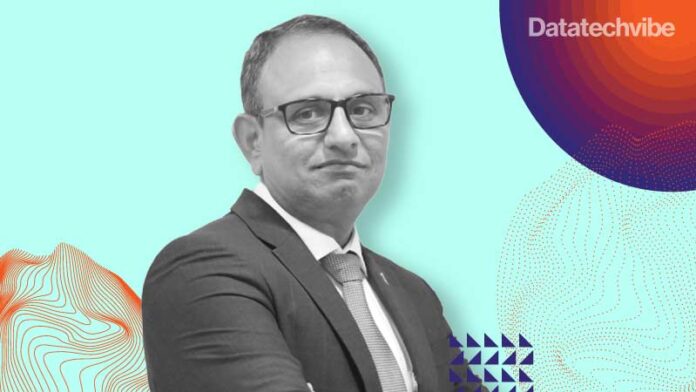Srinivasan Sampath, Acting Group Chief Technology Officer at First Abu Dhabi Bank, speaks about how data and trust are critical to drive innovation and fuel product development that meets the customer’s evolving needs.
Datatechvibe spoke to Srinivasan Sampath, Acting Group Chief Technology Officer at First Abu Dhabi Bank, about how business leaders can encourage innovation, measure success via data analytics and inject customer-centricity in product development.
Building trust with end-users is critical in today’s data-driven world, and several ways exist. Organisations can create a data-driven culture that promotes innovation and growth by being transparent about how data is collected and processed to ensure data accuracy, privacy, and security. In this context, leaders can leverage data and analytics to fuel innovative product development in finance. Banks and financial institutions can develop innovative products that meet customers’ evolving needs by analysing customer data, managing risks, detecting fraud, personalising products, and using predictive analytics. With a customer-centric approach, data-driven product development can create products that meet customer needs and preferences, driving organisational growth and success.
Trusted data via data-driven culture
Gaining end-user trust in data is essential in building a successful data-driven organisation.
Sampath’s suggestions on how to gain end-user trust in data;
Transparency: Being transparent about how data is collected, processed, and analysed is key to building trust with end users. Clearly communicate the sources of data, the methods used to analyse it, and how the results are used to make decisions.
Security: Ensure the data is stored securely and protected against unauthorised access. Use encryption and other security measures to protect the data.
Accuracy: Ensure that the data is accurate and reliable. Use data quality checks and verification processes to ensure accurate data.
Privacy: Ensure that the data is collected and used in compliance with privacy laws and regulations. Use anonymisation techniques to protect personal information and allow users to control how their data is used.
Accountability: Be accountable for the decisions made based on the data. If something goes wrong, take responsibility and take steps to correct the issue.
Education: Educate end users about how to interpret and use the data. Provide training and resources to help end users understand how the data is collected and analysed, and how to use it effectively.
Engagement: Involve end users in the data analysis process. Solicit feedback, listen to concerns, and respond to questions to build a relationship of trust and collaboration.
By following these steps, organisations can build trust with end users and create a data-driven culture that promotes innovation and growth.
Innovative product development using data and analytics
Sampath’s suggestions on how leaders can use data to fuel innovative product development in finance;
Customer insights: Banks and financial institutions can gain insights into customer behaviour and preferences by analysing customer data. This information can be used to develop innovative products that meet customers’ evolving needs.
Risk management: Data analytics can be used to identify and manage risks associated with new products. By analysing historical data, banks can better understand the risks associated with different types of products and use this information to develop new products that are less risky.
Fraud detection: Data analytics can be used to detect fraud and other types of financial crimes. Banks can identify patterns and anomalies that may indicate fraudulent activity by analysing transaction data. This information can be used to develop innovative fraud detection and prevention products.
Personalisation: Data analytics can be used to personalise products and services to individual customers. By analysing customer data, banks can develop products that are tailored to each customer’s unique needs and preferences.
Predictive analytics: Predictive analytics can be used to forecast customer behaviour and market trends. By using this information, banks can develop innovative products that are designed to meet future customer needs.
Target Audience: Data can be used to understand the target audience and their preferences and behaviours.
Overall data and analytics for product development can help create products that meet customer needs and preferences.
Srinivasan Sampath will share strategies for fostering a culture of collaboration among IT executives to drive data-driven decision-making and innovation at Velocity – Data and Analytics Summit – UAE.
For more information and registration, visit Velocity UAE.









